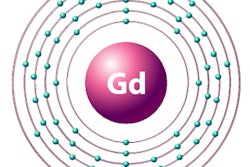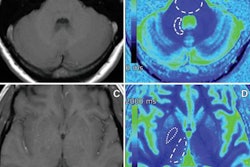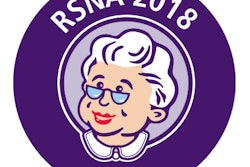
Is gadolinium deposition disease (GDD) really a disease? Italian researchers aren't so sure after they studied patients who received gadolinium-based contrast agents (GBCAs) for MRI scans. They reported their findings in a study published online October 30 in Investigative Radiology.
The term "gadolinium deposition disease" was coined in 2016 to describe patients who report a range of unpleasant symptoms after receiving a gadolinium-based contrast agent. Such symptoms include headache, mental confusion, bone and joint paint, and fatigue. GDD is generally thought to be similar to nephrogenic systemic fibrosis (NSF) but less severe. It's unclear whether GDD is related to gadolinium retention in patients, which has been demonstrated in many studies but has yet to be linked to clinical issues.
To investigate further, a group of researchers led by Dr. Marco Parillo from Università Campus Bio-Medico di Roma looked at reactions in two groups of patients who received two different types of GBCAs, comparing them with patients who received no gadolinium contrast. The prospective study included 1,088 patients who underwent MRI scans between March 2017 and March 2018.
Among those subjects, 241 (22%) received the linear GBCA gadodiamide (Omniscan, GE Healthcare), 366 (34%) were given the macrocyclic GBCA gadoterate meglumine (Claricyclic, GE Healthcare), and 481 (44%) were scanned with no contrast at all. All patients had normal renal function.
Among the two groups that received MRI contrast, nearly twice as many patients reported at least one of seven symptoms within 24 hours of the MRI scan.
| Reports of gadolinium deposition disease symptoms after MRI scans | |||
| Gadodiamide MRI | Gadoterate meglumine MRI | Unenhanced MRI | |
| GDD-like symptoms (% of total) | 12.4% | 12.3% | 6.6% |
| No symptoms (% of total) | 83% | 82% | 92% |
However, fatigue and mental confusion were the only GDD symptoms reported more often in the GBCA groups on a statistically significant basis. The other five symptoms -- headache, central torso pain, leg or arm pain, bone pain, and skin redness -- were "rare" and resolved 24 hours later, with no statistically significant difference between the patient groups.
Interestingly, the researchers found no statistically significant difference between the linear and macrocyclic GBCA groups in the symptoms reported -- despite recent studies finding lower levels of gadolinium deposition following macrocyclic contrast administration.
The results led Parillo and colleagues to suggest that it is time to revise the term gadolinium deposition disease.
"Taking into consideration that persistent symptoms may be rarely observed after exposure to GBCAs and that there is not ... a dose-dependent relationship with previous exposure to multiple doses of GBCAs, the more conservative term 'gadolinium-associated symptoms' could be proposed," they concluded.




















